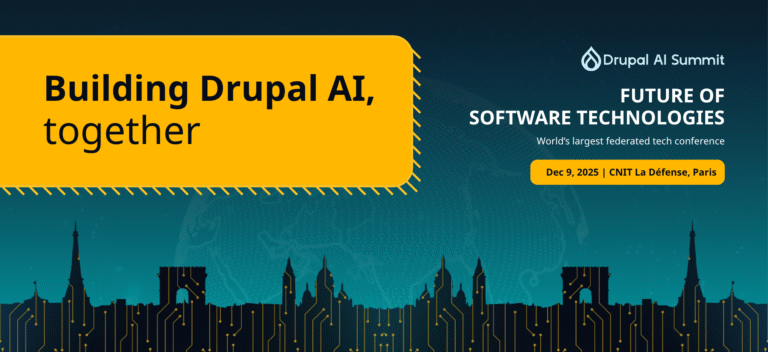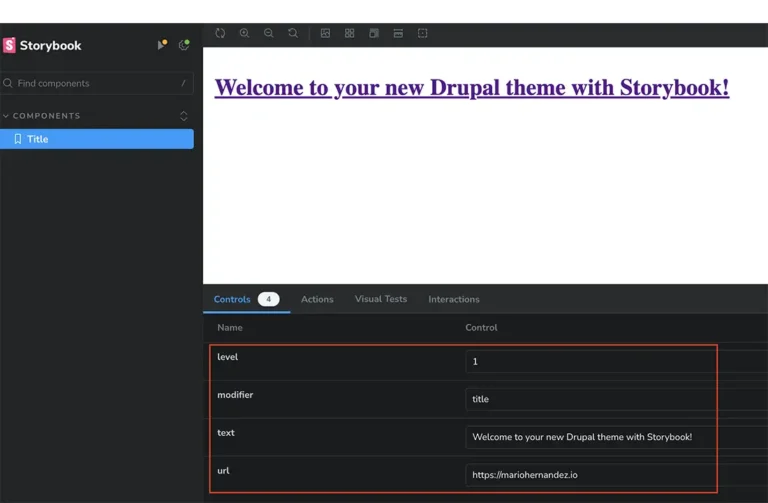May 06, 2025
Once a niche effort, automation has now become a business priority. Not only does it streamline operations – it has also proven effective in improving product quality and even customer satisfaction.
In 2025, we will see deeper integration of automation into business, leveraging the power of AI, smarter data handling, and open-source platforms.
This article explores 15 automation trends to anticipate for the future to help you stay on top of your industry. Compiling data from credible sources, we will cover what’s driving adoption and how these trends have grown in recent years.
Overview of the top automation trends in 2025
- 63% of organizations plan to adopt AI in the next three years, prompting more than 120% year-over-year market growth.
- 30% of enterprises will automate over half their network activities by 2026, while around 90% of major corporations will list hyperautomation as their strategic priority.
- Renowned international companies have deployed self-hosted AI for a wide range of tasks, from fraud detection to predictive maintenance.
- Over 70% of enterprises will rely on AI tools for real-time data integration and processing.
- Workflow automation tool n8n has 200k+ users and grew revenues 5x last year, showing robust demand for flexible automation.
- Software will be advanced enough to automatically create AR-guided instructions directly from CAD models, eliminating manual effort for documentation.
- Half of manufacturers use AI-powered vision systems to manage quality control.
- 57% of automakers plan to deploy collaborative robots to improve flexibility and speed up assembly lines.
- 75% of enterprise data will be processed on edge computing devices or servers by the end of 2025, up from 10% in 2018.
- 91.24% of security leaders are expected to adopt automated cybersecurity tools to safeguard their organization’s infrastructure.
1. Artificial intelligence (AI) and machine learning integration
According to recent forecasts, 63% of organizations worldwide plan to adopt AI within the next three years. The AI market itself is growing at over 120% year-over-year.
Machine learning applications and AI’s capability to effectively transform various business operations, from customer service to back-end operations, contribute to its massive growth.
Another driver for AI adoption is the rise of self-hosted tools like Ollama and DeepSeek, which are gaining popularity due to their privacy features and customization potential. They allow businesses to run AI models on their own infrastructure instead of relying on third-party solutions like ChatGPT.
2. Hyperautomation
Hyperautomation combines several technologies – AI, robotic process automation (RPA), IoT, and process mining – to automate complex business processes end-to-end. It’s designed to remove manual processing, reduce errors, and improve productivity.
By 2026, 30% of enterprises will automate more than half of their network activities – up from less than 10% in mid-2023. Around 90% of large enterprises list hyperautomation as their strategic priority.
Tools like n8n are becoming central to this movement. They allow users to build custom automation workflows that integrate multiple systems and data sources.
3. Self-hosted AI solutions
Self-hosted AI tools run on an internal infrastructure or virtual private servers (VPS) that organizations manage themselves. Many businesses are increasingly turning to such tools for better control, privacy, and customization.
For example, Walmart has used a self-hosted AI solution for inventory and supply chain optimization. JPMorgan Chase relies on it for fraud detection, risk management, and trading algorithms. Meanwhile, Bosch deploys AI internally for predictive maintenance in manufacturing.
This trend is especially important for companies dealing with sensitive or regulated data. By choosing self-hosted tools like Ollama or DeepSeek, organizations can implement automation without third-party cloud services that might present security risks.
Expert tip
Self-hosting AI models on a VPS offers businesses complete control over their data. This approach ensures that sensitive information remains within the organization’s infrastructure, mitigating risks associated with third-party cloud services. Moreover, businesses can avoid recurring API costs and gain flexibility in customizing the AI model.
4. Dynamic data integration
Dynamic data integration connects various systems and applications in real time. It is essential for businesses that rely on fast data flows between departments, tools, and customer-facing platforms.
More than 70% of enterprises are expected to depend on AI-powered tools to process and integrate diverse datasets into their workflows. This shift is expected to help businesses adapt more quickly to changing customer needs and operational requirements.
This trend is expected to grow, especially since tools that enable dynamic data integration are becoming more accessible. For example, businesses can self-host n8n on a VPS to automate tasks without writing complex code.

Open-source automation tool n8n gained over 200,000 active users and multiplied its annual recurring revenue (ARR) by five in the last year.
This indicates a boom in open-source automation tools. Many businesses prefer them as they provide more scalability, customization options, and local integration compatibilities than proprietary platforms.
Such solutions also typically don’t have vendor-lock in policy, thereby offering greater data control which organizations prefer in an era of increasingly strict privacy regulations.
6. Augmented reality (AR) in automation
AR helps companies guide workers in real-time, especially in fields like maintenance, assembly, and training. When paired with automation technology, AR improves accuracy and reduces human error.
In 2025, software in manufacturing is already advanced enough to auto-generate instructions from CAD files for AR devices, minimizing the need for manual documentation and configuration.
7. Vision technology for quality control
50% of manufacturers will rely on AI-driven insights for quality control, highlighting the growing integration of machine learning in manufacturing processes.
AI-powered vision technology is revolutionizing quality control in manufacturing. It employs machine learning algorithms for real-time defect detection, which reduces waste and improves efficiency.
By automating the inspection process, manufacturers can ensure consistent product quality and minimize the risk of defects reaching consumers.
8. Flexible production systems
Modular production lines and collaborative robots (cobots) enable companies to adjust their manufacturing processes more easily, so changes to products do not significantly disrupt operations.
A recent survey shows that 57% of automotive manufacturers plan to increase the use of cobots for repetitive tasks. These robots can be easily reprogrammed for new tasks and work with minimal safety limitations, unlike human workers.
This flexibility supports mass customization, especially in industries like automotive and electronics, where demand can change rapidly.
9. Edge computing for localized automation
Edge computing involves moving data processing closer to the source, reducing latency and improving real-time decision-making. This is especially useful for self-hosted tools like Ollama and DeepSeek, which require fast local processing.
By the end of 2025, 75% of enterprise data will be processed on edge servers or other computing devices, up significantly from just 10% in 2018. The need for faster automation in factories, smart cities, and remote operations is the main driver of this growth.
By handling data locally, edge computing also supports greater privacy, lower bandwidth usage, and faster response times in remote or time-sensitive environments.
10. Cybersecurity in automation
By the end of 2025, 91.24% of security leaders are expected to adopt automated cybersecurity tools.
As more systems become connected and increasingly automated, cybersecurity becomes a critical concern. This has prompted an increase in the adoption of automation platforms – especially AI-driven cybersecurity tools – that can help safeguard systems with minimal human interference.
In addition to traditional monitoring and alerting tools like Grafana, newer automation solutions like n8n can be helpful to smaller businesses as the setup process is simpler.
11. Robotics as a service (RaaS)
RaaS is helping companies adopt automation without large upfront investments. With RaaS, businesses subscribe to robotic systems on demand and scale as needed.
Companies that adopt this solution see significant improvement in their operational efficiency. For example, Xenex uses this model to deploy robots in hospitals, reducing human-spread infections by 50%. Amazon Robotics also uses RaaS in its fulfillment centers, increasing order efficiency by 20%.
The subscription model lowers the barrier to entry, especially for smaller companies. It also simplifies maintenance and updates, since providers manage most of the back-end operations.
12. Digital twins in automation
A digital twin is a virtual model of a physical object or system. It lets businesses automatically simulate, analyze, and optimize real-world operations without interrupting them.
Digital twins are now common in logistics, energy, and manufacturing industries. Based on a survey, 86% of respondents believe this technology is relevant to their business.
Companies use digital twins to test process changes, forecast outcomes, and improve system performance before applying them in production. As these models become easier to deploy, expect broader adoption for a wider range of production processes.
13. Agentic AI for autonomous workflow
Agentic AI refers to autonomous systems capable of making decisions and performing tasks without human intervention. These AI agents can dynamically adapt to changing conditions, making them ideal for complex, non-linear workflows.
Agentic AI adoption is accelerating across industries. This technology has helped companies reduce the time to handle complex customer service cases by 52%, saving approximately 400,000 labor hours annually.
As these systems become more sophisticated, they are expected to handle increasingly complex tasks in different sectors, including cybersecurity.
14. AI-powered business intelligence and analytics
AI-driven business intelligence (BI) tools leverage machine learning algorithms to process vast datasets, uncover patterns, and provide actionable insights in real time.
In 2025, 75% of enterprises are expected to shift from piloting to operationalizing AI, driving a fivefold increase in streaming data and analytics infrastructures.
By automating data analysis with AI, companies can more efficiently identify market trends, customer preferences, and operational inefficiencies.
15. Low and no-code platforms
This year, organizations are expected to build 70% of their new technology products and services using a low or no-code platform. One of the biggest driving factors is the rise of AI-powered development tools like Hostinger Horizons.
Such a platform lets users develop a fully functional web application with minimal to zero coding. Using AI and machine learning, it automates the process of writing code, requiring only simple natural-language prompts.
Low and no-code platforms help businesses streamline rapid product prototyping and iteration, which is crucial for meeting ever-changing market demands.
Expert tip
No-code platforms like Hostinger Horizons allow businesses to quickly transform ideas into functional applications without the need for extensive coding skills. This makes app development accessible to a wider range of users, from marketing teams to non-technical staff. By leveraging AI, these platforms can automate the entire development process, making it easier to build apps faster and more efficiently.

16. Intelligent document processing (IDP)
Intelligent Document Processing (IDP) automates data extraction, categorization, and validation. It reduces human error and improves efficiency by turning unstructured data into actionable insights.
63% of Fortune 250 companies have adopted IDP, with the financial sector leading at 71%. This technology is especially helpful for handling large volumes of data, improving compliance, and streamlining workflows.
As IDP becomes more widely adopted, its role in automation is likely to grow, enhancing data management practices across industries.
17. Predictive maintenance
Predictive maintenance uses AI and IoT to predict equipment failures before they happen. This reduces downtime and maintenance costs by allowing businesses to address issues proactively.
The predictive maintenance market value is growing at a rate of 22.5% this year and is forecasted to reach US$80.6 billion by 2033. This suggests that companies are increasingly finding value in implementing this technology.
As industries adopt predictive maintenance, AI should continue to improve equipment performance and reduce costs as a result.
18. Autonomous vehicles
Autonomous vehicles are transforming logistics, delivery, and fleet management by using AI to navigate without human intervention. This boosts efficiency and reduces labor costs.
The Asia-Pacific is leading in autonomous vehicle adoption, with the regional market growing at a 10.9% CAGR. Countries like China and Japan are at the forefront of this technology.
Autonomous vehicles will likely continue to reshape industries by providing faster, more cost-effective solutions for shipping and transportation.
19. Green automation
Green automation helps companies optimize resources, reduce waste, and cut energy consumption. By automating processes, businesses can create more sustainable operations.
More companies will invest effort into implementing sustainable operations throughout 2025. For example, Unilever has automated its supply chain to cut emissions and reduce energy usage while maintaining high service levels.
Businesses will increasingly adopt green automation to meet sustainability targets while improving operational efficiency.
20. Reskilling for automation
As automation increases, 85 million jobs may be displaced, but 97 million new roles are expected to emerge. These new jobs will focus on managing and operating automated systems.
Companies are investing in reskilling programs to help workers adapt to automation. This shift will require a mix of technical and human-based skills.
In the long run, reskilling will lead to more adept workers and better productivity from leveraging automation technologies.
The future trends of business process automation
The business process automation (BPA) landscape is expected to grow significantly. In 2025, the global BPA market will reach $16.46 billion, up from $14.87 billion in 2024, reflecting a compound annual growth rate (CAGR) of 10.7%.
The main contributor to this growth is the increasing adoption of automation tools that enhance efficiency and scalability. Organizations are leveraging BPA to reduce operational costs, improve productivity, and minimize compliance errors.
The integration of AI and machine learning is also propelling this growth. Automation tools with these advanced technologies have more extensive capabilities, making them applicable to more tasks.
With that in mind, expect more industries to adopt AI-powered automation workflows. Aside from sectors like software development and cybersecurity, non-computing areas such as manufacturing are also likely to utilize this technology more.
As businesses continue to streamline operations and remain competitive, the emphasis on scalable, secure, and intelligent automation solutions is expected to intensify.
Sources
Conclusion
Automation in 2025 is about flexibility, control, and smarter systems. This year, we have seen the rise of various AI-powered automation tools for businesses, from self-hosted open-source platforms to RaaS systems.
Leveraging AI-powered tools’ extensive capabilities and applications, businesses are no longer just automating – they’re building intelligent systems that can adapt, predict, and perform at scale.
In the future, the trend of advanced automation tools is expected to grow even further and expand to other industries beyond computing. One of the driving factors is that self-hosted solutions, like n8n, are becoming more accessible to the masses.
To stay competitive, now is the time to explore these trends and find the ones that align with your business goals. Start integrating smarter tools and automated processes today to remain at the top of your industry.
Automation trends FAQ
What are the current trends in automation?
Key automation trends include AI-driven predictive analytics, hyperautomation tools combining AI and RPA, increased use of self-hosted AI platforms for privacy, dynamic data integration, and the rise of open-source platforms like n8n. Additionally, augmented reality is enhancing human-machine collaboration, and edge computing is enabling real-time processing at data sources.
How is AI influencing automation trends?
AI is central to automation, enabling systems to make decisions, adapt to changes, and predict outcomes. It powers hyperautomation, enhances data integration, and supports self-hosted solutions for privacy. AI-driven tools are also improving manufacturing through vision-based quality control systems and facilitating dynamic, real-time data processing.
What industries are most affected by automation?
Industries most impacted by automation include manufacturing, where AI-powered robots perform repetitive tasks, and retail, with automation in warehouses and customer service. Healthcare and finance are also experiencing significant changes due to AI-driven diagnostics and algorithmic trading.









